Abstract
Purpose
Recently, the whole DNA sequence of Bacillus subtilis (B. subtilis) was identified, revealing the existence of the YvrK gene encoding a 43 kD oxalate decarboxylase (OXDC), which degrades oxalate by a simple pathway. The objective of this study was to develop recombinant Escherichia coli (E. coli) expressing the Yvrk gene from B. subtilis.
Materials and Methods
After the extraction of total DNA from B. subtilis, the YvrK gene was cloned by polymerase chain reaction. The cloned DNA encoding OXDC was inserted into the pBAD/gIII-A vector, downstream of the L-arabinose promotor. The plasmid vector was transformed into TOP 10 E. coli, and the transformants were selected with ampicillin. The recombinant E. coli, named pBy, was then analyzed by DNA sequencing and Western blot. To evaluate the oxalate-degrading function of pBy, pBy was cultured in LB broth containing oxalate, and then the amount of oxalate in the medium was assessed. The oxalate-degrading activity of homogenates of pBy was evaluated.
Results
DNA sequencing showed the successful transformation of the YvrK gene into TOP 10 E. coli. Western blot analyses showed that pBy expressed OXDC. pBy removed oxalate during the overnight culture in oxalate-containing LB broth, and the homogenate of pBy degraded 90% of oxalate under acidic conditions.
Conclusions
A recombinant E. coli expressing the YvrK gene was successfully produced. The bacteria showed potent oxalate-degrading activity. The results of this study will provide a solution to the treatment of calcium oxalate stones and hyperoxaluria, for which there are few medical treatment modalities.
Go to : 
REFERENCES
1.Jo MK., Kwak C., Park SK., Yoo KY., Kang DH., Kim HH. Prevalence and epidemiological characteristics of urolithiasis for adults aged 40-79 in Seoul, Korea. Korean J Urol. 2000. 41:367–74.
2.Ahlstrand C., Tiselius HG. Recurrences during a 10-year follow-up after first renal stone episode. Urol Res. 1990. 18:397–9.

3.Allison MJ., Dawson KA., Mayberry WR., Foss JG. Oxalobacter formigenes gen. nov., sp. nov.: oxalate-degrading anaerobes that inhabit the gastrointestinal tract. Arch Microbiol. 1985. 141:1–7.

4.Kwak C., Jeong BC., Lee JH., Kim HK., Kim EC., Kim HH. Molecular identification of Oxalobacter formigenes with the polymerase chain reaction in fresh or frozen fecal samples. BJU Int. 2001. 88:627–32.

5.Kwak C., Jeong BC., Kim HK., Kim EC., Cho MS., Kim HH. Molecular epidemiology of fecal Oxalobacter formigenes in healthy adults living in Seoul, Korea. J Endourol. 2003. 17:239–43.
6.Kwak C., Kim HK., Kim EC., Choi MS., Kim HH. Urinary oxalate levels and the enteric bacterium Oxalobacter for-migenes in patients with calcium oxalate urolithiasis. Eur Urol. 2003. 44:475–81.

7.Tanner A., Bornemann S. Bacillus subtilis Yvrk is an acid-induced oxalate decarboxylase. J Bacteriol. 2000. 182:5271–3.
8.Tanner A., Bowater L., Fairhurst SA., Bornemann S. Oxalate decarboxylase requires manganese and dioxygen for activity. Overexpression and characterization of Bacillus subtilis Yvrk and YoaN. J Biol Chem. 2001. 276:43627–34.
9.Menon M., Parulkar BG., Drach GW. Urinary lithiasis; etiology, diagnosis, and medical management. Walsh P, Retik A, Vaughan D, Wein A, editors. editors.Campbell's urology. 7th ed.Philadelphia: Saunders;1988. p. 2661–734.
Go to : 
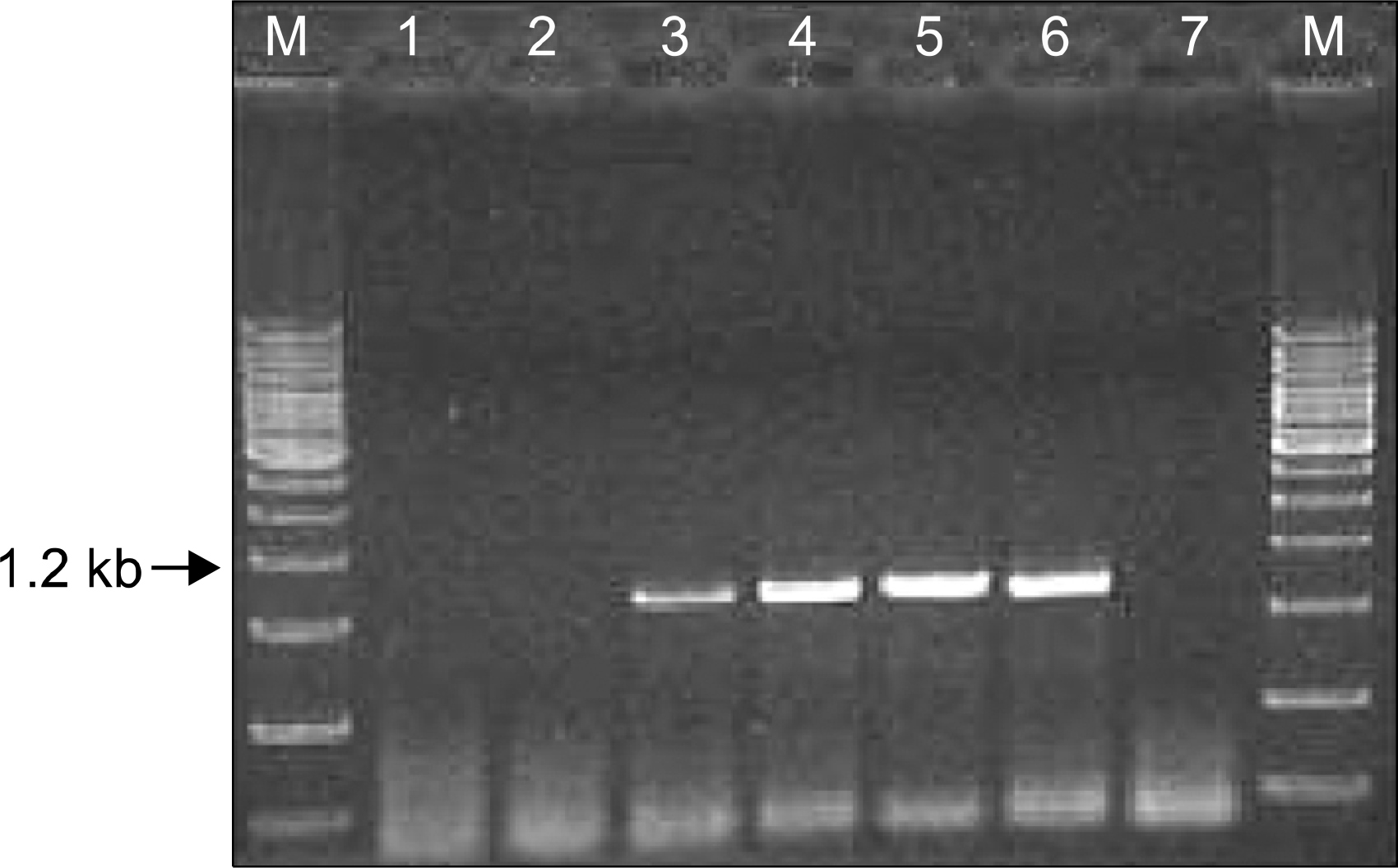 | Fig. 1.
Yvrk gene cloning by polymerase chain reaction (PCR). M: 1 kb plus DNA ladder, PCR using 1μl (1, 2), 3μl (3, 4), 6μl (5, 6), and 0μl (7) genomic DNA showing a 1.2 kb band. |
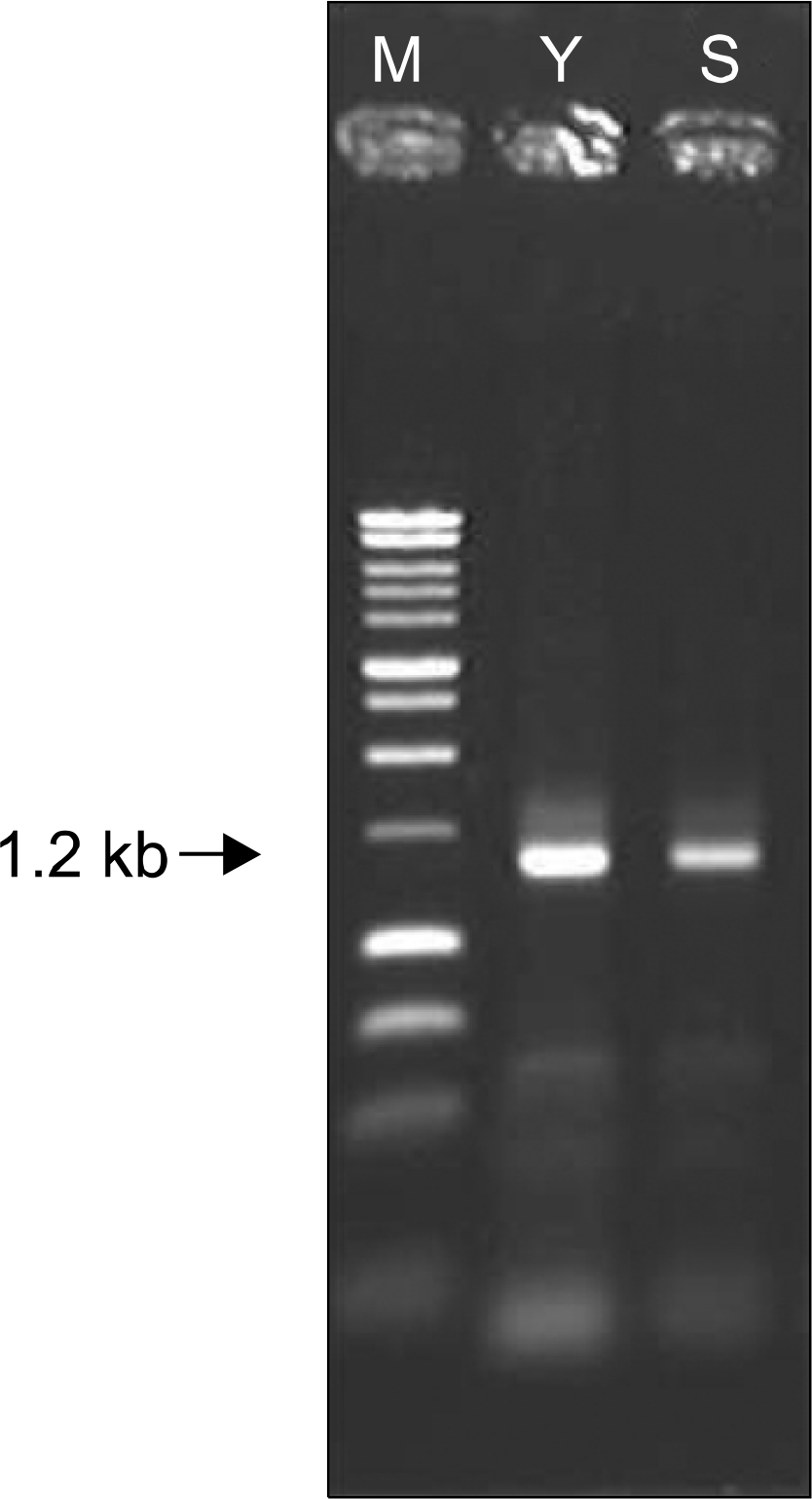 | Fig. 2.Identification of Yvrk transformation by PCR. M: 1 kb plus DNA ladder, Y: Bacillus subtilis, S: pBy. 1.2 kb band of the Yvrk gene is seen in both B. subtilis and pBy. |
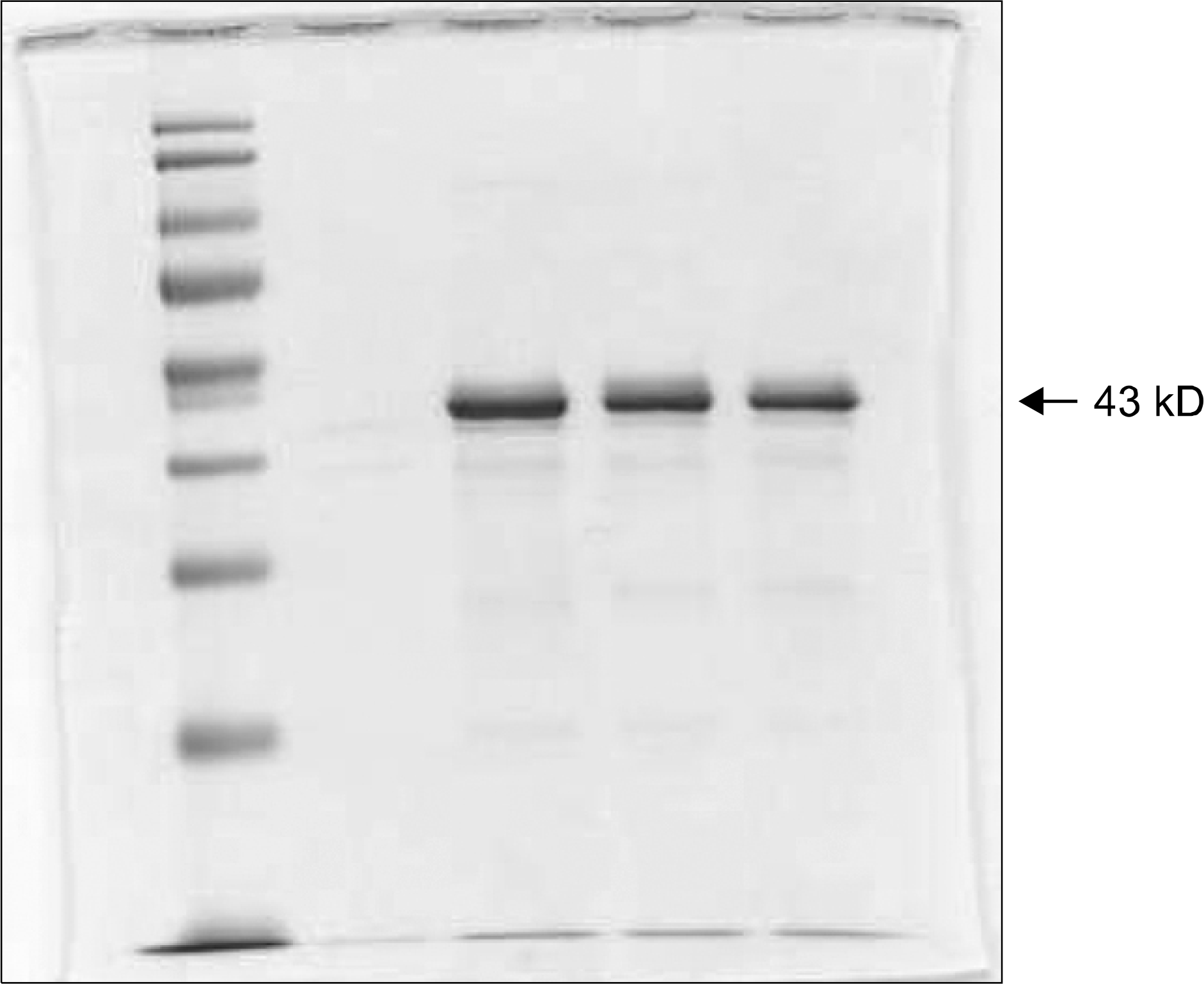 | Fig. 3.Western blot for oxalate decarboxylase (OXDC). Using anti-histidine antibody, a 43 kD protein (oxalate decarboxylase) was observed. |




 PDF
PDF ePub
ePub Citation
Citation Print
Print


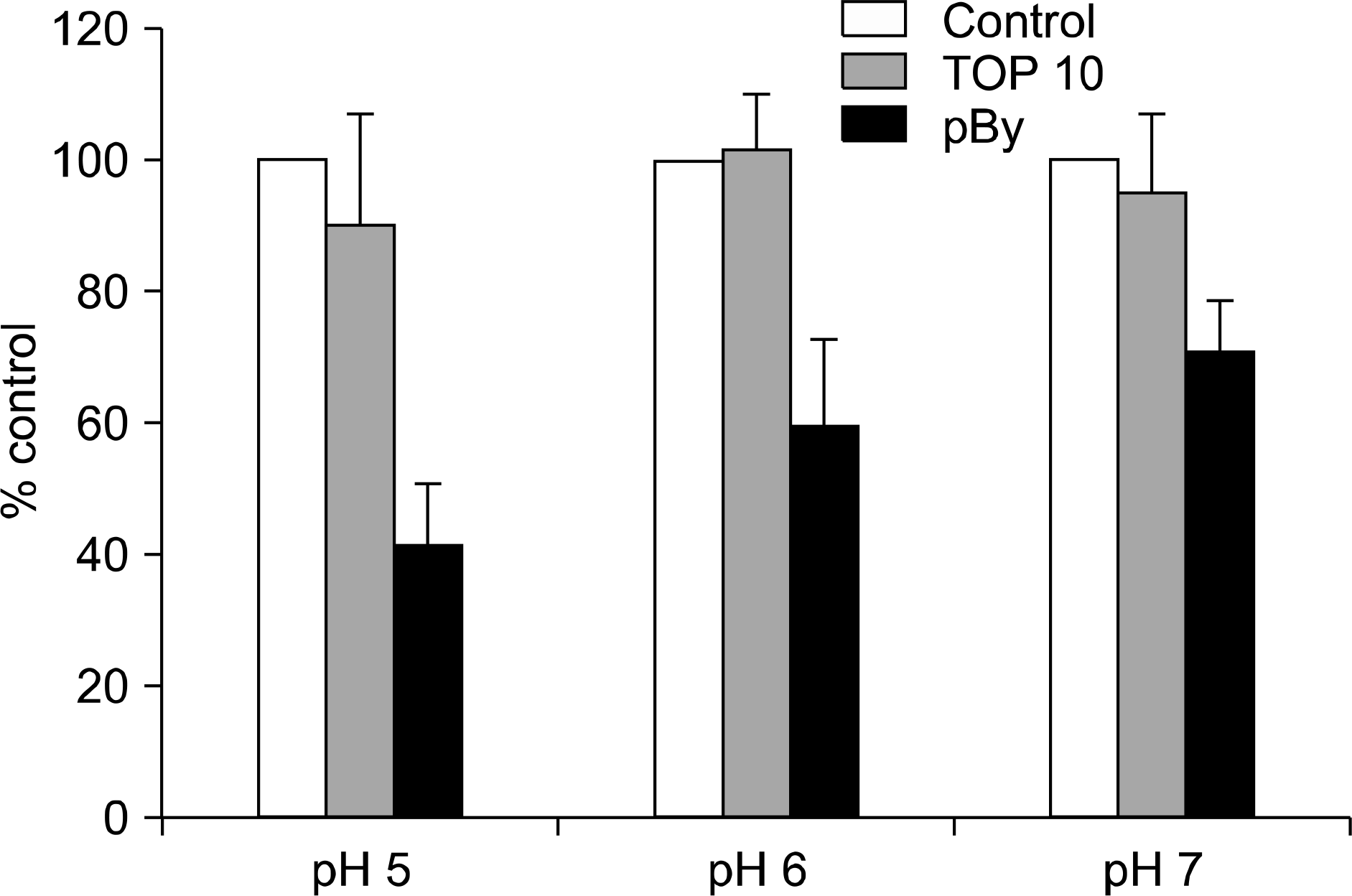
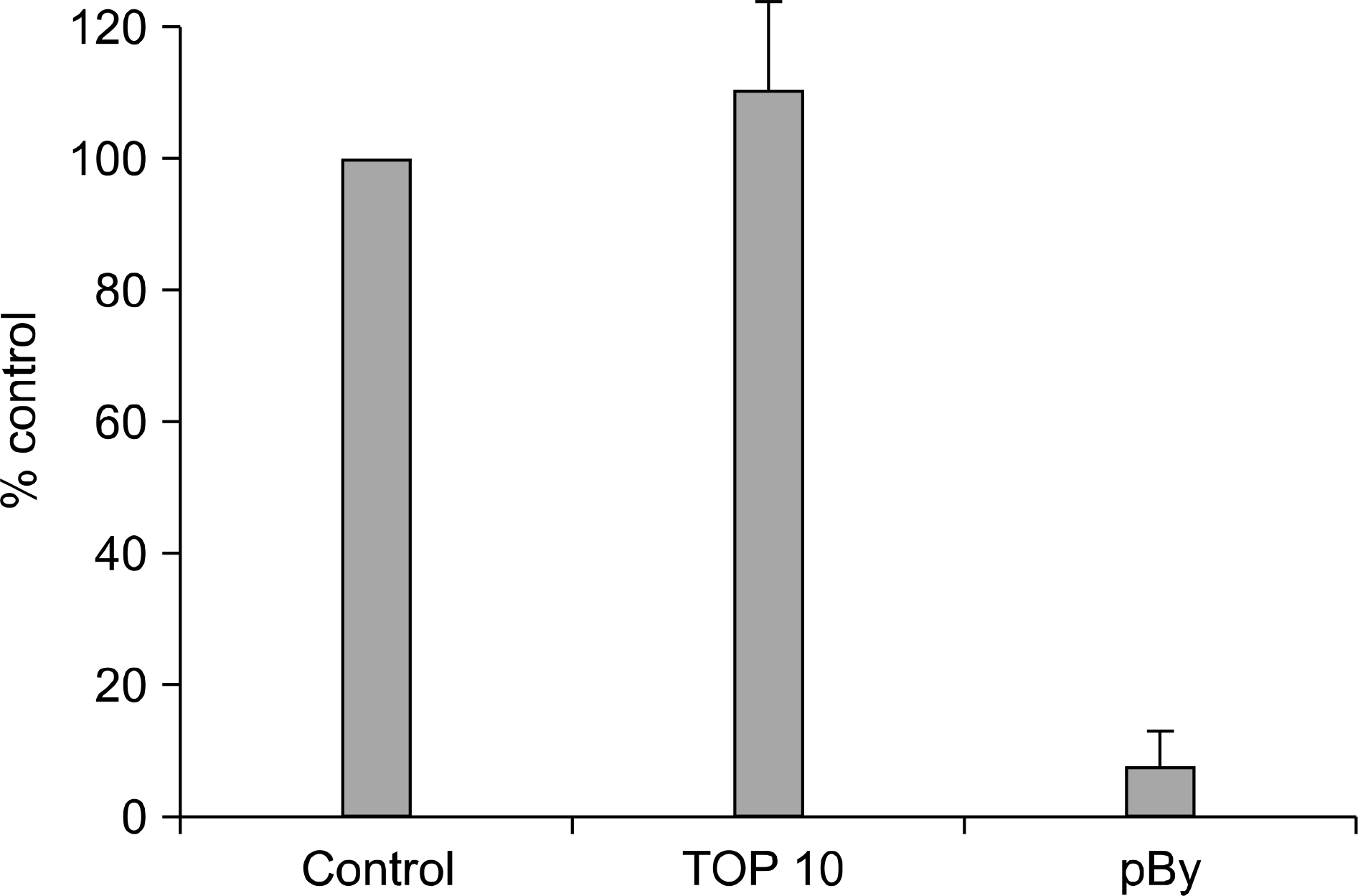
 XML Download
XML Download